Last year, four-door saloons and SUVs represented 80 per cent of Porsche’s sales. Just take a moment to let that sink in. The German company’s scope has expanded so much that the 911 and 718 Boxster/Cayman sports cars – Porsche’s core product lines – were a mere one-fifth of its output in 2021. Even the Taycan EV outsold the 911.
Enthusiasts love, and sometimes love to hate, Porsche for its sports cars, but even as far back as the ’80s the Stuttgart company knew that two-door vehicles were a small fraction of the global market. We can’t really begrudge Porsche for changing direction – in reality, it’s had little choice in the matter. What’s perhaps surprising is just how long it took to get there in the first place.

Back in 1988, Porsche made just 31,362 cars, generating a paltry $13.7 million in profit – well under a single per cent margin, at the time. No business can survive on that; the front-engined 944 and 928 were selling slowly and the 911, in its 964 iteration – using a body structure that dated back to 1966 – was ageing fast.
Enter Ulrich Bez, as Porsche’s new Member of the Board Research, Engineering, Motorsport to get to grips with the problem and rethink the company’s model range. To survive, Porsche needed new product, and fast. The engineer joined the ailing company from BMW Technik – a legally separate entity from the BMW parent company.
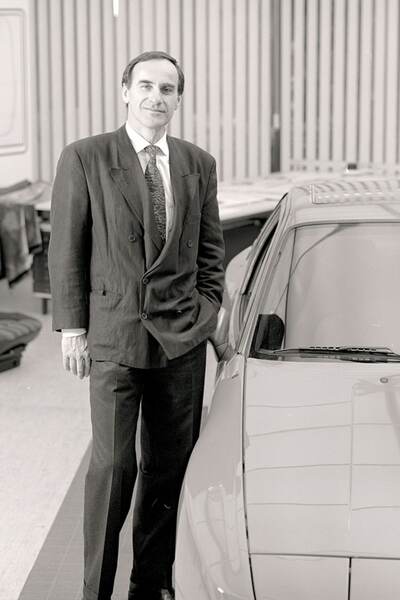
Technik’s role had been to design and engineer vehicles in a team environment without being shackled by the processes of creating production cars. That hadn’t stopped one slipping under the noses of the accountants and making it to the road though: the radical Z1 roadster, created by Technik’s design team led by Harm Lagaay, the designer behind the Sierra RS Cosworth who had started his career earlier at Porsche. Bez was a perfect fit as Porsche’s new engineering boss.
Soon after Bez settled into his new role at Porsche, he encouraged Lagaay to follow him to the Dutch designer’s former employer, in late 1989. “Things were worse than I realised” recalls Lagaay, “The model range was ageing and the first thing I did was to see about quickly refreshing the 911.” That quick rejuvenation was the 993-generation car that 911 enthusiasts now hold dear to their hearts – and the last air-cooled version cleaned up the fussiness that had so aged the 964.
It could be no more than a stopgap 911, but it was enough. The bigger task was what to do with the four-cylinder 944 and V8-powered 928. The smaller car still brought in some volume, but the 5-litre 2+2 was selling in tiny numbers, at less than 1000 each year; there was no way it made sense to directly replace it.
Bez rightly decided to take a punt – the 993 could tide things over on the sports car front and the 944 was given a low-cost facelift as the 968. This left the thorny issue of replacing the V8. The 928, originally conceived as a 911 replacement, represented the worst of both worlds; too big on the outside for 911 buyers and too small inside to serve as a proper four-seater. Bez was all-too familiar with the BMW M5 from his days at Porsche and the four-door super-saloon’s fat profit margin. The idea for the 989 was obvious: a new eight-cylinder Porsche, featuring far more power than BMW Motorsport’s six-cylinder engine.
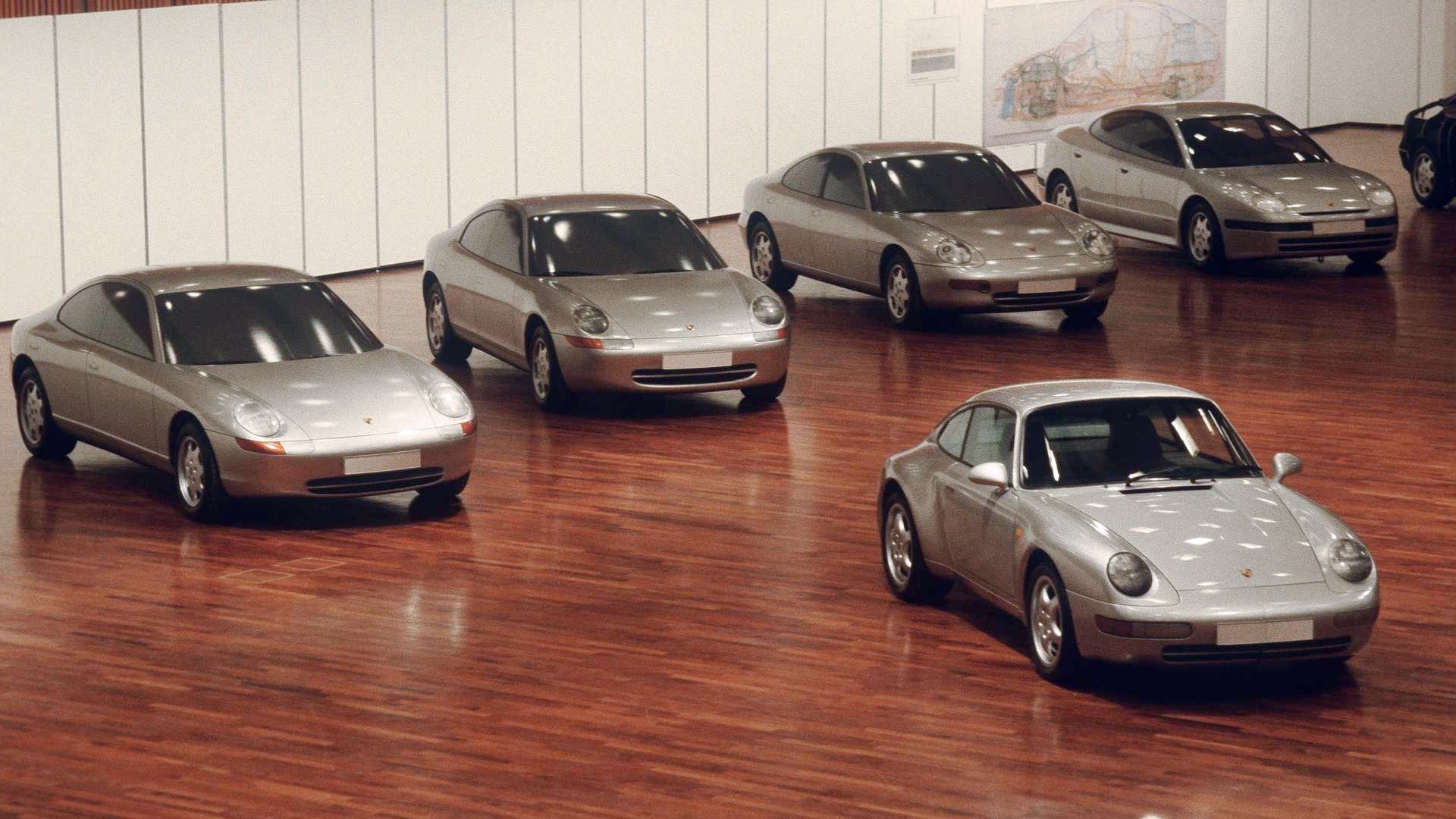
Porsche might have been on its knees, financially, but it had a talented design leader in Lagaay and a visionary engineering manager in Bez. What it now lacked was the product-planning expertise that ensured a vehicle’s concept delivered against the market’s needs. The M5 outsold the 928 four-to-one, but even so BMW shifted just 4000 M5s per year. What it could do, that Porsche could not, was amortise the super-saloon’s costs over the far larger number of regular 5 Series it churned out every day.
Would the sums add up for the 989?
There is a theory that the first mover establishes the market and – as Blackberry, then Apple, found – a second newcomer perfects their product and mops up. Fine in the world of consumer goods, but Porsche needed to drastically outsell the M5; to make the numbers stack up it would have to sell roughly one hundred thousand 989s over the car’s life to recoup tooling costs. It was a big stretch for the financially strained small company.
One obvious way to keep costs under control was on the most expensive component – the engine. Porsche had tooled up for the V8 powering the 928, but at around $7000 per motor, it was a hugely expensive element to make in-house.
A far smarter route was to buy in a V8 block and rework it with new heads and ancillaries, just as Porsche had done with the 924’s EA831 engine that first saw service in the Audi 100. However, purists sneered that it was merely a VW van engine, and Stuttgart replaced it with a genuine Porsche unit derived from the 928’s V8 when the 944 arrived.
But needs must, and Audi’s 3.7 litre V8 from the A8 was a fine motor that Porsche could fettle for the 989. There was the possibility – assuming Porsche survived into the late-’90s – that the 989 could later be updated with a Porsche-designed engine that could also serve duty in whatever someday replaced the 911.
The 989 project – intended for launch in ’95 – kicked off in early 1990, with Harm Lagaay’s design team working simultaneously on the ’94-model 993 facelifted 911 and the 968 nip-and-tuck of the 944. As the only all-new design, the four-door 989 moved Porsche’s design language forward. It helped inspire the 968’s softening of the 944’s geometric forms and drew upon the delightful bisecting shutlines around the front lamps that defined the 993. BMW frequently called upon the talents of Italdesign, Bertone and Pininfarina as a sense check against their internal teams, and it was Italdesign that Porsche commissioned to submit an alternative to the three similar-but-different submissions created under Lagaay.
The Italians created something more SEAT than Porsche-like; there was no contest when the four options were lined up together in early ’91. The task now was to refine the 989’s design, toughening up the front a little here, adding an attractive angled surface at the rear there, and finalising the interior. Meanwhile, a Mercedes W124 E-Class was commandeered as a test hack to try out the new V8 engine in its earliest form. The Porsche/Audi powered Mercedes is still retained by the Porsche Classic museum today, and it’s evident that this was very much a first-generation test vehicle.
With suspension and powertrain engineering underway, the 989 was moving along nicely during 1990. A definitive ‘inside-out’ full sized model was completed that looked 99 per cent like a fully-drivable car, but the sleek bodywork was fibreglass rather than metal and the supporting chassis made of humble steel frame and boxwood. When photographs emerged many years later of the 989 model wearing a registration plate, the assumption was that the 989 had been road-ready, but no, it was just for internal display.
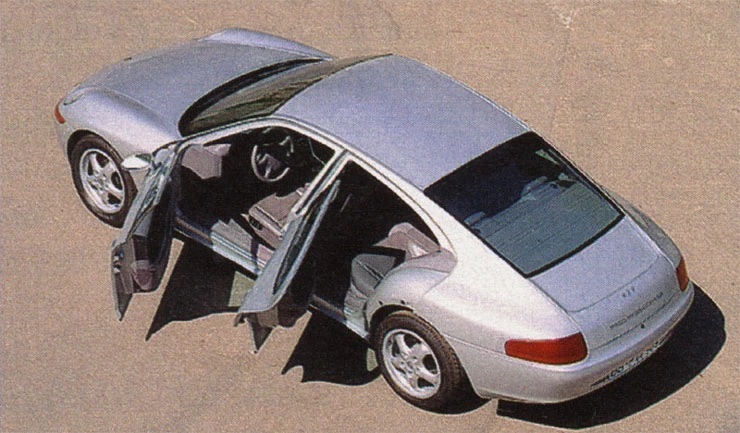
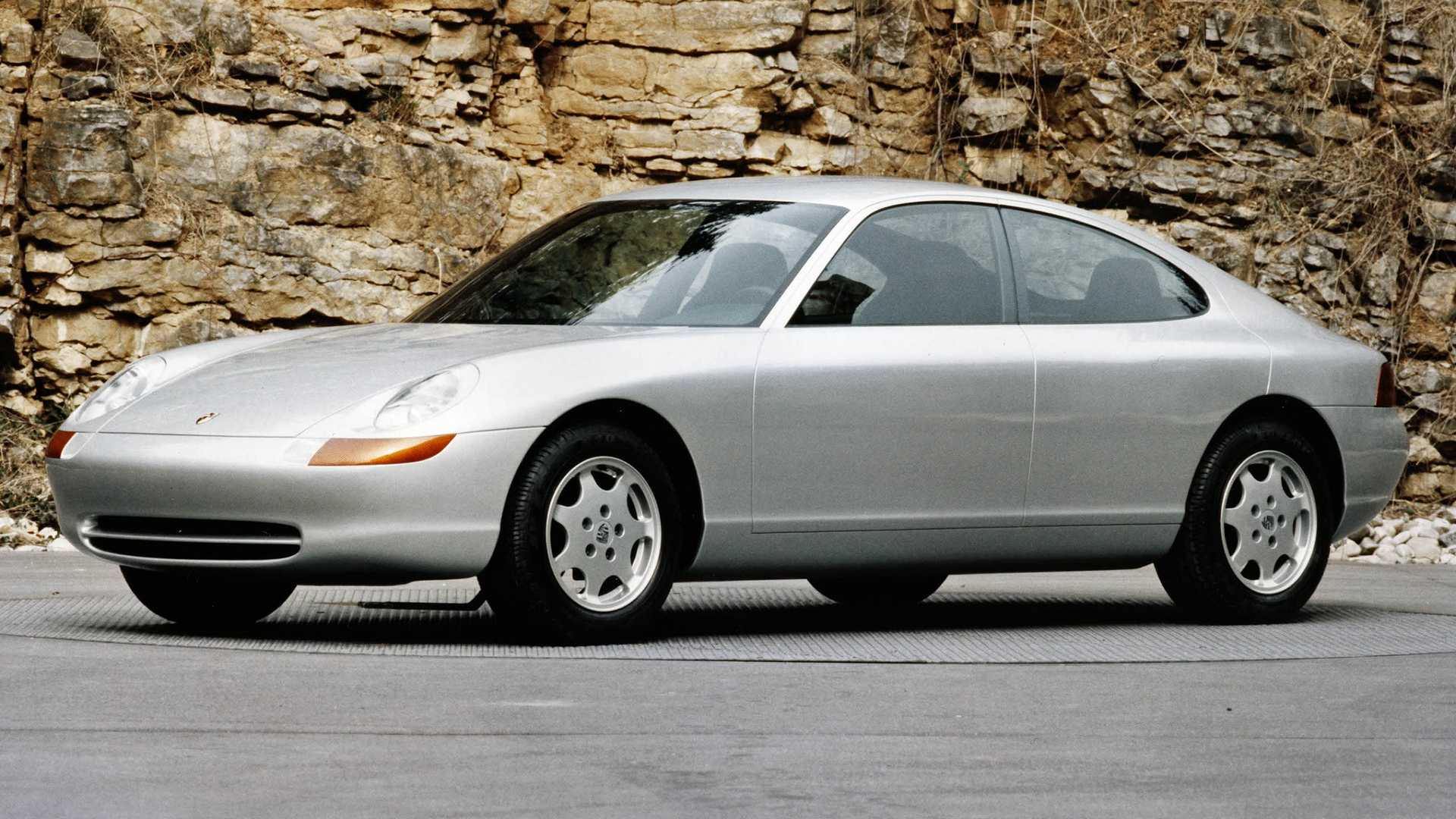
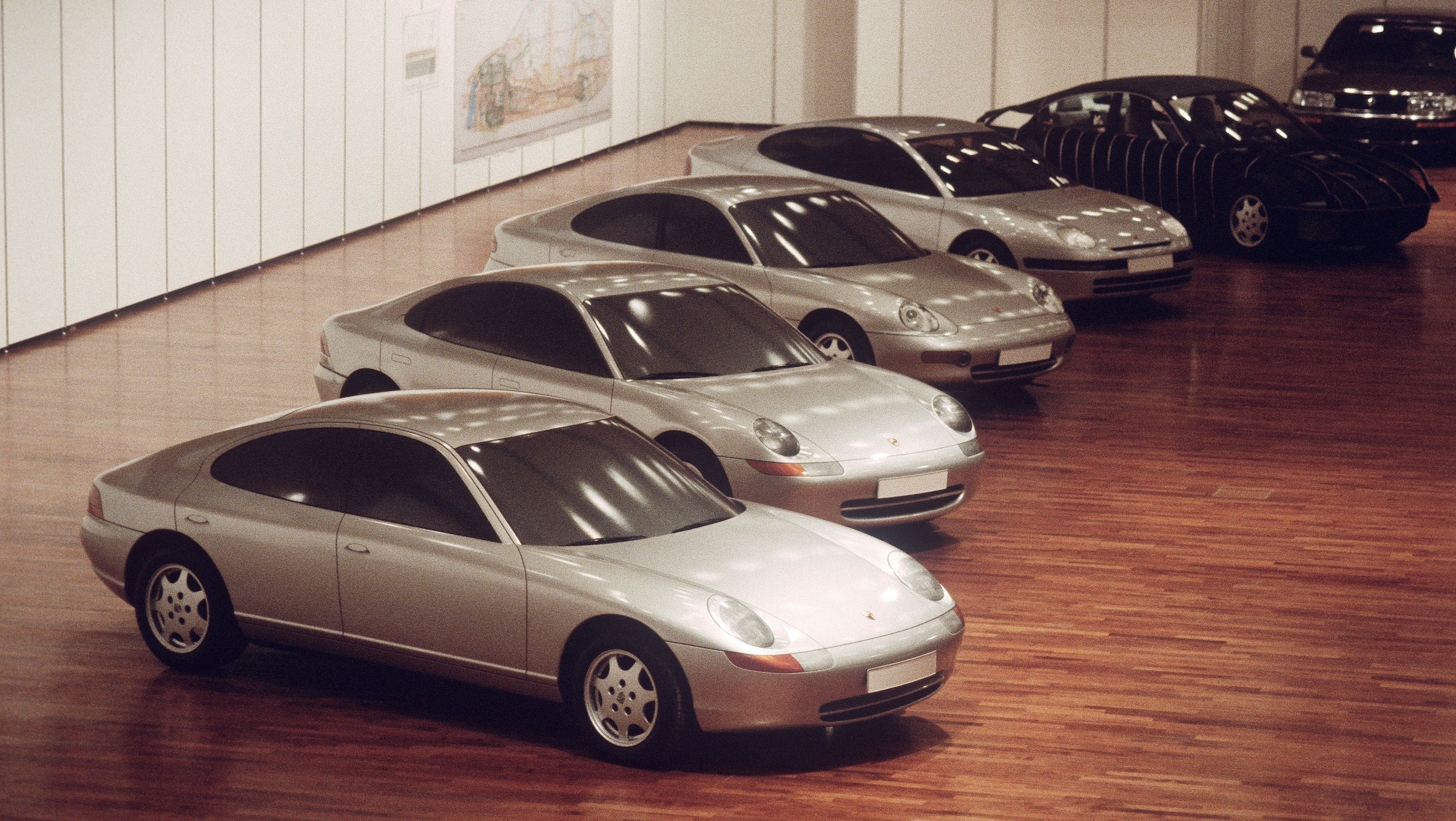
The chilly financial winds that started blowing around Porsche in the late ’80s were now whipping it into potential oblivion by early ’91. BMW’s Wolfgang Reitzle approached the Porsche families with an offer to buy the ailing sportscar company, but their asking price of $600 million was seen as too much. Instead, BMW sunk an even greater fortune into Rover.
Porsche needed the 989 as its lifeboat to save the company, but costs were spiralling out of control. The projected price in today’s money was $180,000 – that’s twice the price of a Panamera today – and Porsche needed to sell 15,000 units a year, nearly four times the number of M5s that BMW was shifting.
It didn’t take an MBA to work out that the sums simply didn’t stack up. The super-saloon car market of the time was a fraction of what it later became and the 989 – with its sleek coupé-like looks would have obviously struggled against the commodious Mercedes S-Class, or the practical E500 that perhaps ironically, Porsche helped engineer.
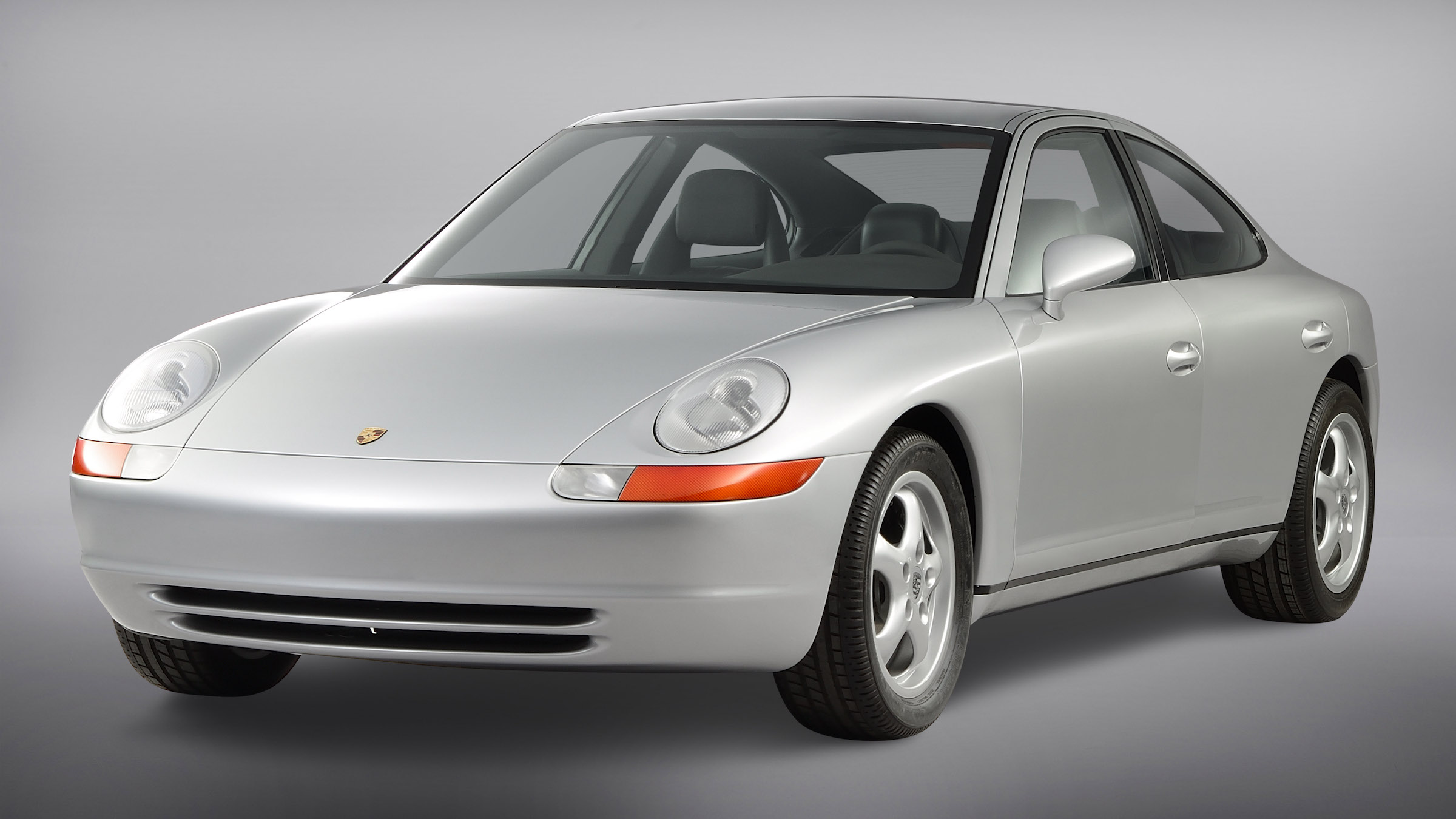
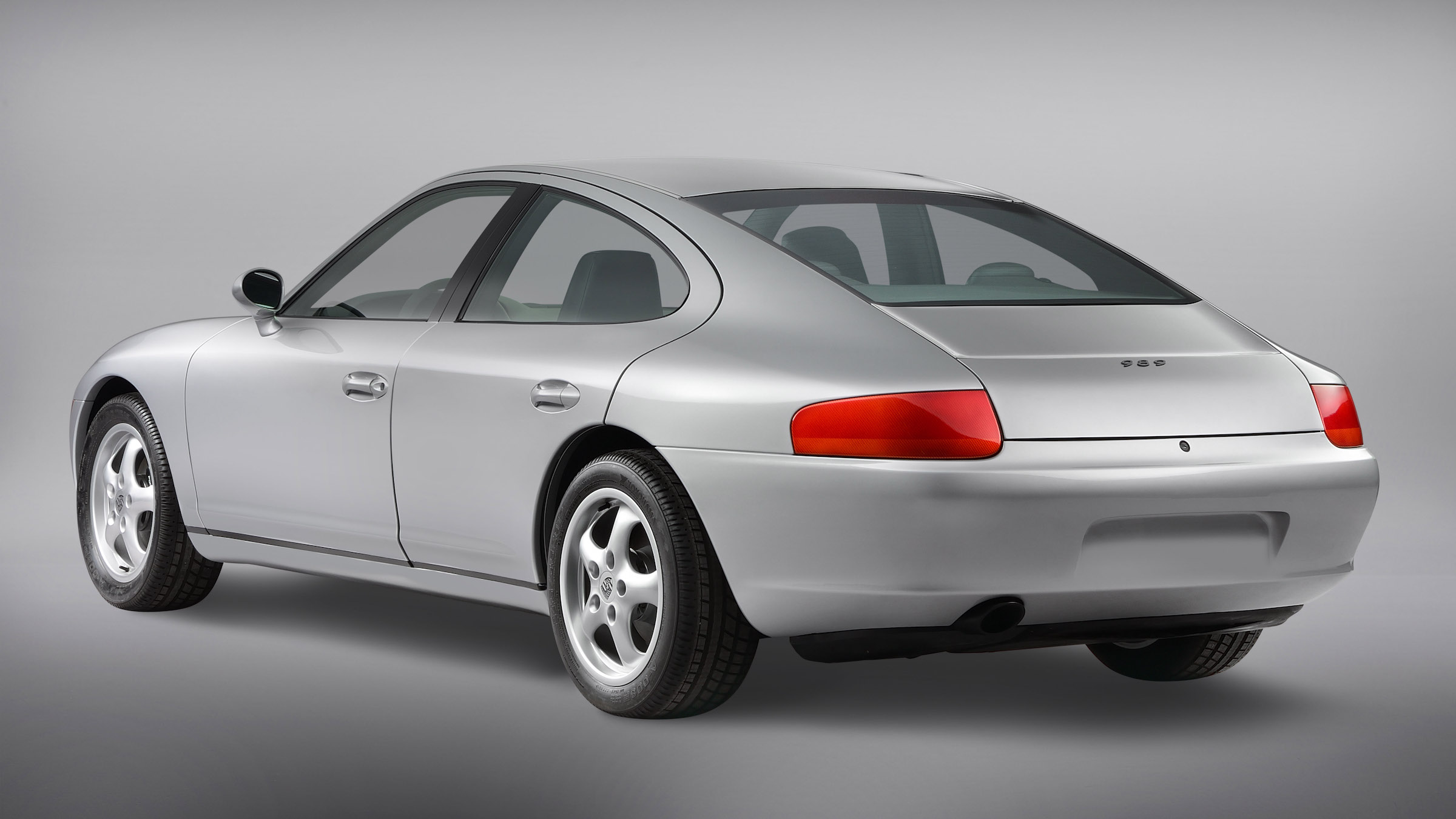
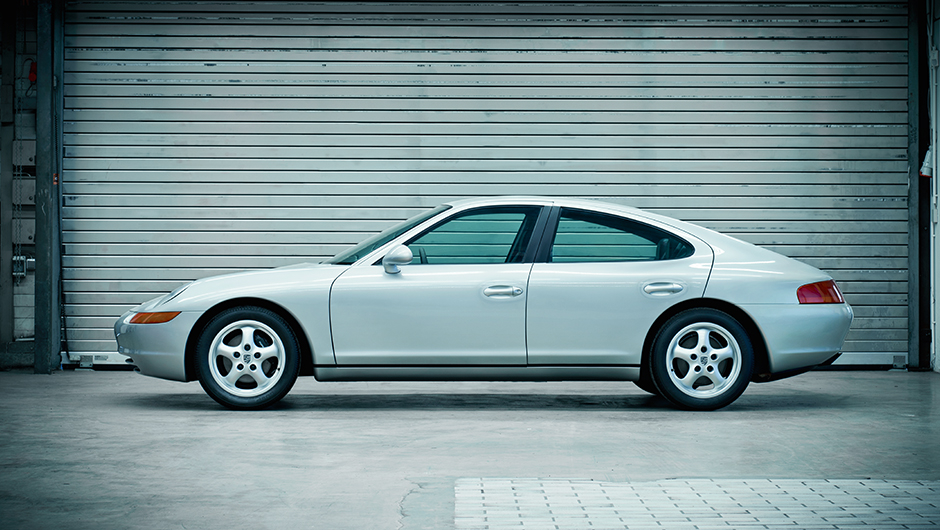

Politics were hardly helped by the fact that Ferdinand Piech, one the highest-profile members of the Porsche family, happened to be the CEO of Audi. Since Porsche family members were not allowed to influence the running of the company, imagine how conflicted Piech felt at being asked to surrender Audi’s V8 motor to a competitor started by his grandfather.
Crunch time for the Porsche 989 secret saloon project
There is a crucial point in the vehicle development process. It’s not when the prettiest model is selected, or when the first engineering mules start running, but when the tooling needs to be ordered. Clay models and test cars might cost a four-to-six-figure sum but Porsche, so strapped for cash in 1991, would have had to shell out millions to tool up for the 989. And all this for a model that shared almost nothing with other vehicles in the range.
Porsche had no choice: the risk was too great. The car looked terrific but add a few Porsche-priced extras and a four-door costing $200,000 in today’s money could only ever sell in small numbers. The project was officially scrapped in spring ’91, and Ulrich Bez left the company soon after to join Daewoo – a client of the Porsche Engineering consultancy. The 320bhp V8 engine was still under development but – like the car itself – was unfinished, and for a while Porsche toyed with it as a possible 911 power unit.
To a casual observer, the 989 looks like a four-door version of the 996-generation 911. But it’s not; the all-new 911 was launched in ’98, seven years after the 989 bit the dust. If anything, the 996 was stylistically more a two-door 989 than the other way around.
The 996-generation 911 and the 986 Boxster replaced the 989 as Porsche’s potential saviours, and were born from a different mindset – one learned from Toyota – and that ultimately rescued the company. By building two cars out of one common set of components, Porsche saved itself a fortune. The 989 could not have saved Porsche, but without it the 996 would not look the way it did. Perhaps its death was really a benefit – giving Porsche a badly-needed focus and reality check, and ultimately living on in today’s 911 and 718 sports cars.
You can get a Hagerty-exclusive discount of 10 per cent – plus free UK P&P – off each of the two volumes of Steve Saxty’s Secret Fords books at stevesaxty.com. Use the coupon code HAGERTY10 at checkout.
Read more
Icon vs Underdog: Porsche 993 Turbo vs Porsche 996 Turbo
All aboard the Porsche bus: Dakar support car up for sale
Gold standard: As the Porsche 911 2.7 RS Sport and Touring turn 50, we drive them







Beautiful car !
Was the 989 V8 an 80-degree design as have seen online or a 90-degree design based on Audi’s V8?